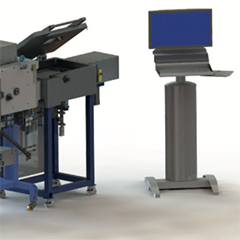Silicon heterojunction solar cells (SHJ) have gained more attention during this past decade as a good candidate for being the next generation of mainstream photovoltaics. This might be explained as a consequence of high solar cell power conversion efficiency at a moderate cost. The efficiency potential of SHJ solar cell is now demonstrated, with outstanding solar cell efficiencies exceeding 25% reported from R&D labs.
Taking into account the industry driver for the production of the solar cell, namely its cost per watt peak, the role of today’s equipment manufacturer is to propose equipment capable of producing a high efficiency SHJ solar cell, at a low cost. Despite the relatively simple process flow of SHJ solar cells, hydrogenated amorphous silicon (a-Si:H) deposition system, the key component for SHJ performances, still remains one of the major costs for manufacturing SHJ solar cells.
In order to manufacture SHJ solar cells, a stack of intrinsic and doped hydrogenated amorphous silicon needs to be deposited on both sides of the silicon wafers, at a relatively low processing temperature. Deposition systems, capable of coating hydrogenated amorphous silicon layers, are often based on Plasma-Enhanced Chemical Vapor Deposition, PECVD, or Hot-Wire Chemical Vapor Deposition. Existing PE- or HW- CVD solutions are solely 1-sided deposition systems.
Moreover, in order to avoid cross-contamination between intrinsic and doped a-Si:H layers, from run-to-run processes, either induced by dopant remaining on wall of the reactor, or on the carrier holder itself, the deposition system is often complexified.
In order to prevent this run-to-run cross contamination, silicon wafers are exchanged from different carrier holders into different processing chambers, used for only one type of layer deposition. These result in numerous costly reactors and complexify the handling of fragile wafers.
A schematic of such a process flow is represented in figure 1. Such a process flow offers the safest SHJ solar cell manufacturing in regards to run-to-run cross contamination, but obviously impeded the processing complexity and cost.






























